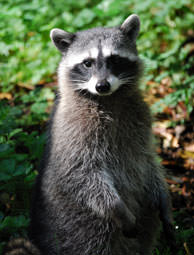 Photo by Sue Weaver Waiting for my turn to eat yummy acorns! |
It’s autumn in the Ozarks, and autumn is my favorite time of year. Autumn is when acorns are ripe! Uzzi and I love acorns and so do the other goats, the sheep, the horses and steers, and especially Carlotta, our razorback pig. Acorns are yummy! But it isn’t good to eat a lot of acorns at a time.
A lot of kinds of oaks grow in the Ozarks. Our favorite acorns are from the big White Oak by Mom’s writing cabin. They fall on her deck and on the ground, and then we get to eat them!
But Uzzi and I don’t get out to eat acorns until the other goats have been picking them up all day. Mom lets all of the sheep and goats into the yard to eat nuts that fell overnight. That way, each of us gets only a handful of nuts. Too many acorns are toxic, and they make you sick! That’s because oak leaves and acorns contain tannic acid. In large amounts, tannic acid causes gastroenteritis (inflammation of the gut and atomic diarrhea) and maybe even kidney damage. You can tell if your goats, sheep, cattle or horses have oak poisoning because of the symptoms: lack of appetite, depression, constipation, diarrhea (which may contain blood), bloody urine, colic and laminitis. So, do like Mom and limit your animals’ time under the oak trees so they don’t get sick.
There is an exception, though: pigs. Drat Carlotta, she can eat all the yummy acorns she wants! Pigs don’t get oak poisoning. In fact, in olden days people fattened their pigs on acorns. In some places, they still do, like in Spain, where a special breed called Black Iberian pigs is raised running loose in oak forests and fattened on acorns for a month or so before slaughter. Their gourmet ham is called jamón ibérico. The best kind is jamón ibérico de bellota (Iberian ham of acorns). Imported, it costs almost $100 a pound!
Mom eats acorns and you can too You can buy a 50-page book published by the California Oak Foundation about California acorns and how to cook them. The recipes work for other kinds of acorns, too.











